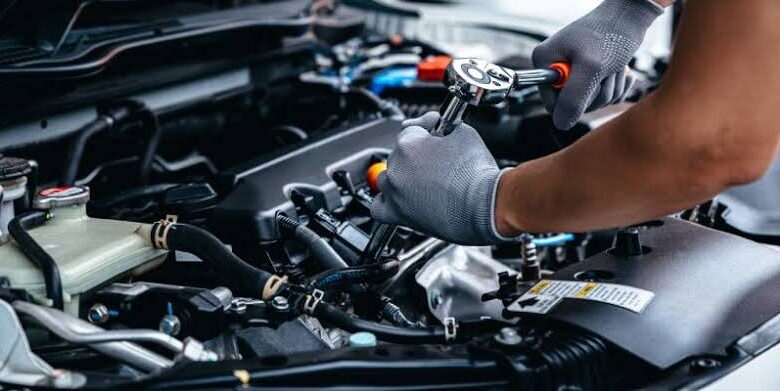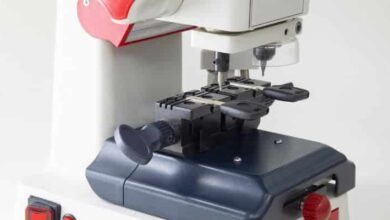Essential Tips for Effective Car Repair and Maintenance

Understanding Your Vehicle: The Heart of Effective Maintenance
The Anatomy of Your Car: Key Components You Should Know
Understanding the various components of your vehicle is fundamental to effective car maintenance and repair. A vehicle operates through interconnected systems: the engine, transmission, brakes, steering, suspension, and electrical systems. The engine, often considered the heart of the vehicle, generates the power needed to drive. Familiarizing yourself with engine components like spark plugs, oil filters, and fuel injectors can help you identify what requires regular servicing or replacement.
Equally important in car repair and maintenance is the transmission, which transfers power from the engine to the wheels. For automatic transmissions, keeping an eye on fluid levels and quality is essential, as neglect can result in costly repairs. The braking system, composed of rotors, pads, and calipers, also requires regular attention, as these parts wear down over time. Identifying signs of wear can be crucial in avoiding severe issues.
Additionally, understanding the suspension system, including shocks, struts, and springs, ensures a smooth, safe ride. Lastly, knowledge of your vehicle’s electrical system—battery, alternator, and starter motor—can help prevent unexpected breakdowns. Regular car repair and maintenance on these key systems not only prolongs your vehicle’s lifespan but also enhances its safety and performance.
Decoding Diagnostic Tools: Unleashing the Power of Technology
Modern vehicles are equipped with advanced technology that allows for quicker diagnostics than ever before. The On-Board Diagnostics (OBD) system is standard in almost all cars made after 1996. By using an OBD-II scanner, you can uncover essential information about your vehicle’s health. These scanners can identify error codes which indicate specific issues within the various systems of your vehicle, guiding you towards the root of a problem.
Additionally, understanding how to interpret data from diagnostic tools can empower you to make informed decisions regarding repairs. Many diagnostic tools come with live data features, allowing you to see real-time information such as coolant temperature, engine RPM, and fuel pressure. This numerical insight is invaluable in pinpointing issues that may otherwise remain hidden. Furthermore, embracing more sophisticated diagnostic technologies, such as thermal imaging or ultrasound detectors, can take your car maintenance to a whole new level, enabling you to catch problems before they escalate.
The Importance of Regular Check-Ups: Ignoring Them Could Cost You!
Regular check-ups are non-negotiable for car owners who wish to maintain their vehicle’s integrity and performance. Scheduling periodic inspections can help catch minor problems before they balloon into major issues, potentially saving you significant costs down the road. Typical maintenance check-ups should include oil changes, tire rotations, brake examinations, and fluid level inspections. Ignoring these routine services can lead to decreased fuel efficiency, poor handling, and dangerous performance discrepancies.
Consider this: an oil change every 3,000 to 5,000 miles is not merely a suggestion; it is a need driven by the wear-and-tear on your engine. Dirty or low oil can lead to irreversible engine damage, costing thousands of dollars in repairs. Moreover, tire pressure and tread depth checks are vital to ensure that your vehicle maintains adequate traction, especially in challenging driving conditions. Ultimately, devoting time to regular check-ups will not only prolong the life of your vehicle but enhance your overall driving experience.
DIY vs. Professional Repairs: Navigating the Fine Line
Empowering Yourself: When to Roll Up Your Sleeves
DIY car repairs can be both rewarding and cost-effective but come with responsibilities and risks. Simple tasks like oil changes, air filter replacements, and wiper blade installations are often easily manageable with minimal tools and can save you money. In fact, many car enthusiasts pride themselves on understanding the inner workings of their vehicle and relish the challenge of making repairs themselves. Online tutorials, forums, and instructional videos have democratized car maintenance knowledge, allowing aspiring mechanics to learn and apply skills hands-on.
Furthermore, undertaking minor repairs can deepen your understanding of your vehicle, building confidence in your mechanical aptitude. However, equipping yourself with a reputable repair manual specific to your car model can provide invaluable insights into the processes involved. Knowing when to engage in DIY repairs is primarily based on your comfort level and the complexity of the task at hand. If the repair involves basic components, you are likely safe to proceed. However, if it requires specialized knowledge and equipment, it may be best to leave it to the professionals.
Recognizing the Red Flags: When to Call in the Experts
While the DIY ethos is admirable, some repairs are best left to professional mechanics. Red flags such as recurring issues, unusual noises, warning lights, or changes in driving performance should prompt a visit to a mechanic. For instance, if you find yourself repeatedly needing to top off your oil or coolant, it may indicate a deeper problem, like a leak or internal damage. These signs should not be disregarded, as they can lead to hazardous driving conditions and irreversible vehicle damage if left unaddressed.
Additionally, if you encounter electrical issues such as problems with battery charging or dimming lights these can be complex and require specialized tools and knowledge to diagnose. Much like diagnosing a medical issue, discerning automotive problems often requires the expertise of trained professionals who can methodically assess various systems. Not only do mechanics have the skill and experience to tackle complex problems, but they also use advanced diagnostic tools that provide insights beyond what a DIY enthusiast can achieve.
Cost vs. Quality: Finding the Sweet Spot in Auto Repairs
The cost of repairs versus the quality of service received often presents a challenging dilemma for car owners. While it may be tempting to seek out the cheapest option, skimping on repairs or using low-quality parts can lead to long-term complications and higher costs in the future. Quality is paramount in ensuring that repairs not only resolve the immediate issue but also enhance the longevity of your vehicle. Investing in reputable parts and certified services can be more cost-effective in the long run.
When selecting a repair shop, consider factors such as customer reviews, certifications, and warranties. A shop with good credentials and positive feedback may charge slightly more, but their expertise will likely ensure a higher quality of work. Moreover, inquire about warranties on parts and labor, which can provide peace of mind and demonstrate the shop’s commitment to quality. Finding balance in this equation requires research and diligence, but it is important for developing a maintenance strategy that keeps your vehicle healthy without breaking the bank.
The Seasonality of Car Maintenance: Ready for Any Weather
Winter Woes: Preparing Your Vehicle for the Cold
Winter presents unique challenges for vehicle maintenance, requiring special attention to ensure optimal performance. Begin by checking antifreeze levels to prevent freezing and ensure your car’s heater functions well. If you live in particularly cold areas, consider using a winter-grade oil which provides better lubrication in low temperatures. Additionally, inspect your battery; the cold is notorious for reducing battery capacity and can leave you stranded in frigid conditions. It’s prudent to clean terminal connections and possibly invest in a battery warmer for extreme cold.
Your vehicle’s tires are also a critical element during winter months. Ensure your tires have adequate tread for traction, or consider switching to winter tires designed for colder conditions. For added safety, flashlights, blankets, and an emergency kit should always be kept in your vehicle during winter. Pick-up or SUVs may also benefit from snow chains depending on your locale, providing an extra layer of stability during severe weather. Proper preparation can make winter driving manageable, keeping you safe on the icy roads.
Summer Savvy: Keeping Cool During the Heatwaves
As summer rolls around, the heat can take a toll on your vehicle, particularly on its cooling system. Ensuring your radiator and A/C are functioning properly should take priority as temperatures rise. Check the coolant levels and transmission fluid regularly, as these fluids can evaporate more quickly in high heat. Ensure that your air conditioning system is filled with the proper refrigerant levels, and don’t ignore strange noises or reduced cooling capabilities as they indicate underlying issues.
Additionally, the intense sunlight can cause damage to your vehicle’s interior, so consider using sunshields or leather protectants to ward off sun damage. Tire pressure can also fluctuate with temperature changes, so it’s essential to monitor and adjust tire inflation as needed. The importance of routine checks and fluid levels cannot be overstated during the summer months; neglecting these can lead to engine overheating or failures that may leave you stranded in a sweltering environment.
Spring Cleaning: A Fresh Start for Your Car
Spring is the perfect opportunity for a comprehensive car cleaning and maintenance regimen to shake off the remnants of winter. Begin with a thorough cleaning of both the exterior and interior. Salt and grime from winter roads can linger on your vehicle’s undercarriage and exterior surfaces, leading to rust if not eliminated. Furthermore, vacuuming and shampooing the vehicle’s interior not only enhances aesthetics but helps maintain the fabric and materials, preventing deterioration.
Beyond the cosmetic aspects, spring maintenance should also focus on mechanical checks. Inspect wiper blades for frays and ensure that windshield washer fluid is full, as spring can bring about erratic weather changes. Tire tread depth should be evaluated for wear and seasonal performance changes, and it is a good time to align or rotate tires if needed. Additionally, check the battery condition, as extreme temperature changes can affect functionality. Spring symbolizes renewal, and aligning your vehicle’s maintenance with the season can set the pace for a smooth ride throughout the year.
Eco-Friendly Practices: Keeping Your Car and the Planet in Check
Greener Choices: Sustainable Products for Car Maintenance
Car maintenance doesn’t have to come at the expense of the environment. In recent years, eco-friendly products and practices have emerged as viable options for conscientious consumers. For example, several manufacturers now offer biodegradable motor oils and lubricants, which reduce the environmental impact when disposed of. Additionally, many automotive cleaning products have transitioned towards natural ingredients, which are less harmful to ecosystems.
Consider using reusable materials such as microfiber cloths for cleaning and synthetic fiber brushes instead of traditional options. When servicing your vehicle, opting for environmentally-friendly replacement parts can also help minimize waste. Organizations and manufacturers that prioritize sustainability often speak about their responsibility towards reducing the carbon footprint of their products, giving consumers peace of mind through informed purchasing choices.
Fuel Efficiency: Maximizing Mileage While Reducing Emissions
Increasing fuel efficiency not only saves money but is beneficial for the planet. Simple maintenance habits, such as keeping your tires inflated to the recommended pressure and using high-quality engine oils, can improve fuel economy. It’s also effective to eliminate unnecessary weight from your vehicle removing excess cargo will enhance performance and reduce fuel consumption. Lastly, adopting good driving practices, like maintaining steady speeds and reducing excessive idling time, can contribute significantly to better fuel efficiency.
Regular tune-ups and maintenance checks of your vehicle’s fuel and exhaust systems can also ensure that no excessive emissions are produced. Vehicle diagnostics, as mentioned earlier, can uncover underlying issues affecting your engine’s efficiency, leading to cleaner operations. Furthermore, hybrid and electric vehicles represent another eco-friendly avenue that is growing rapidly, offering reduced emissions and innovative technology designed to protect our environment while providing solid performance.
The Future of Automotive Repair: Innovations that Care for the Earth
As technology advances, the automotive repair industry is undergoing remarkable changes aimed at environmental conservation. Innovations such as electric and hybrid vehicles are gaining traction, prompting repair shops to adapt their services to accommodate new technologies. Hybrid and electric vehicle batteries, for instance, require specialized training and equipment to service safely, while also highlighting the need for recycling programs for old batteries to prevent toxic leakage into the environment.
Additionally, more mechanics are implementing sustainable practices within their workshops, such as utilizing renewable energy sources and recycling oil and old components responsibly. Many repair shops are seeking certifications for sustainability, showcasing their commitment to reducing their environmental impact. The future of automotive repair relies heavily on balancing innovative technology with practices that respect and protect our planet.





